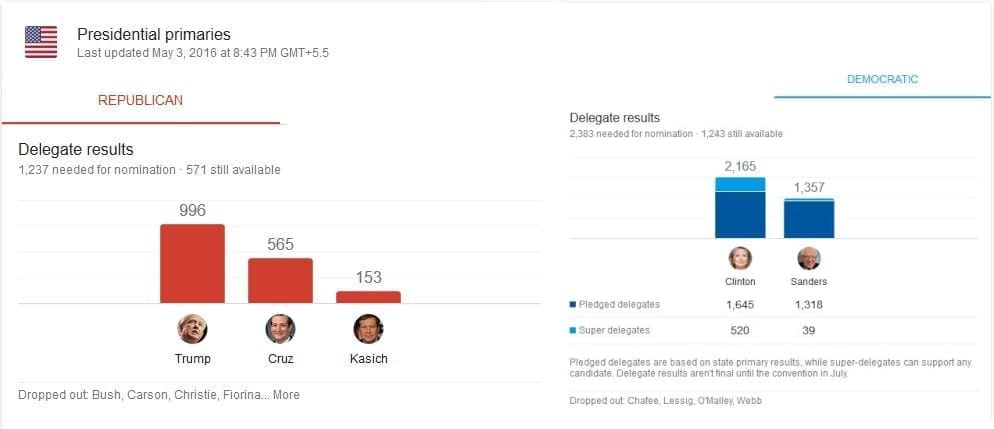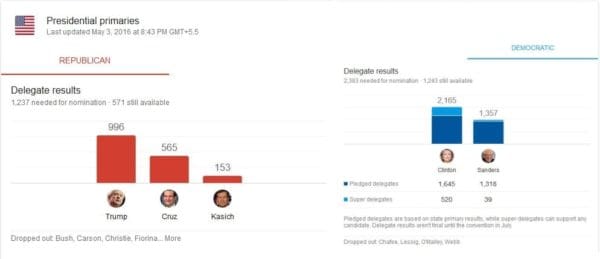
The Democratic Party first emerged in the 1790s under the leadership of Thomas Jefferson. The party was in power during the Great Depression under the leadership of Franklin Roosevelt. Between 1932 and 1968 the Democrats held the presidency for 28 out of 36 years, interrupted only by Eisenhower’s two terms (1952-1960). They also controlled the House of Representatives until 1994 and the Senate. America’s youngest ever president John F. Kennedy was a Democrat. The party, however, went out of power during the late eighties and late nineties. It once again captured the Presidency under the leadership of Bill Clinton.
The Republican Party alternatively known as the Grand Old Party or GOP was founded in the 1850s, by those opposed to the expansion of slavery into the new western territories of the US. It soon captured the White House when Abraham Lincoln won the presidency in 1860.
Electoral College: The American person, as is commonly believed, does not directly elect the American President. An electoral college elects him. The Electoral College is the name given to a group of “electors” who are nominated by political activists and party members within the states. On Election Day, these electors, pledged to one or another candidate, are popularly elected. In December, following the presidential vote, the electors meet in their respective state capitals and cast ballots for president and vice president. To be elected, a candidate requires 270 electoral votes. In the event of a close race or a multiparty race or any candidate not getting 270 votes, the House of Representatives chooses the next president.
Caucus: In American presidential politics, the word means a gathering of each party’s local political activists during the presidential nomination process. At the lowest scale, local party activists, working at the precinct level, select delegates to county meetings, who in turn select delegates to state meetings. These state-level conventions select delegates to their party’s national nominating convention. The purpose of the caucus system is to indicate, through delegate choice, which presidential candidate is preferred by each state party’s members.
Debate: In recent years American political debates have come to be associated with televised programmes at which all candidates for the presidency or the vice presidency present their own and their party’s views in response to questions from the media or members of the audience.
Front-runner: A candidate in any election or nomination process who is considered to be the most popular or likely to win.
Primary election: An electoral contest held to choose a political party’s candidate for a particular public office.
Recent developments
The extremely close nature of the 2000 Presidential elections (decided by less than 0.5 percent in the popular vote and outcome in one state), finally decided by the U.S. Supreme Court, brought some much-needed reforms in the Presidential elections pattern. In 2002, the 107th Congress passed the Help America Vote Act (HAVA). Accordingly the federal government now offers payments to states and localities to replace outdated punch card and lever voting machines. An Election Assistance Commission has been established to provide technical assistance to local election administration officials and establish standards for voting devices.

Be the first to comment